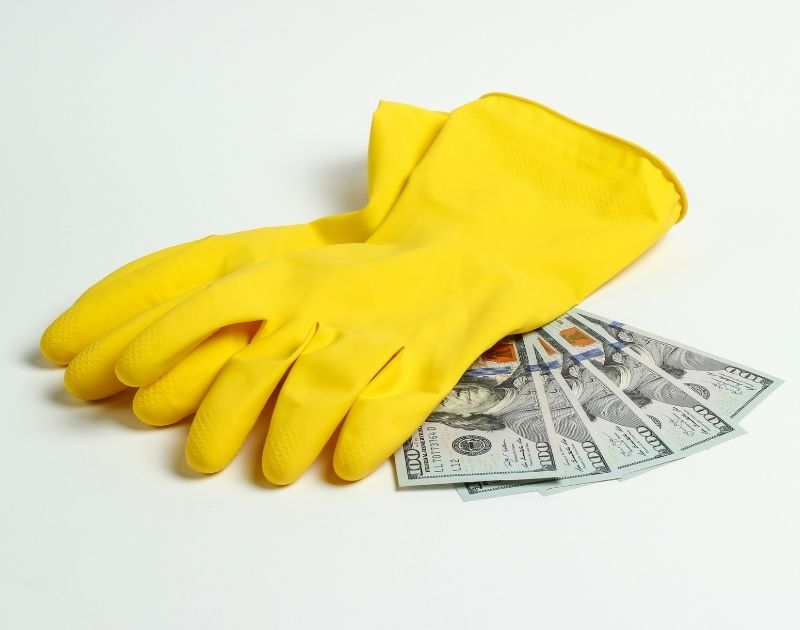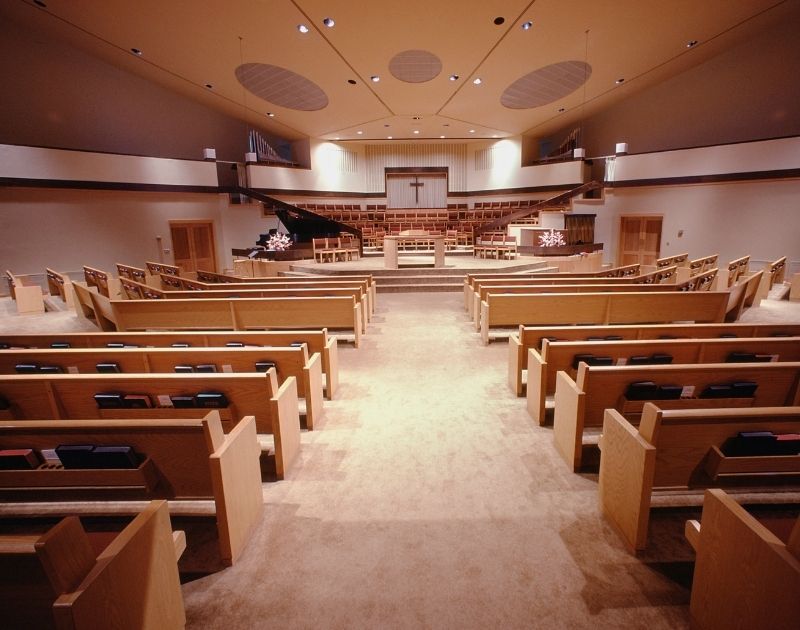Switching cleaning companies mid-year may feel like an easy fix when service lapses or quality dips. Maybe you’ve had a missed trash pickup or noticed dirty floors, and you assume a new janitorial team will solve the problem. But seasoned facility managers and office administrators know this: changing providers in the middle of a contract brings hidden costs, disruptions, and risks that often far outweigh any short-term gains.
Think about it. Your in-house operations rely on steady, professional commercial cleaning and janitorial services. If you swap out your cleaning crew unexpectedly, you lose the familiar, trained team that knows your building’s layout, schedules, and special requirements. New crews need time to learn everything – from which floors get heavy traffic to your specific security protocols. In the meantime, productivity can suffer. Employees may have to cover basic cleaning tasks or work around incomplete service, and complaints can rise. You may even face penalties for breaking a contract early. In short, the price of switching too soon is much more than just one month’s invoice.
In this post, we’ll dive into the operational, financial, and reputational costs of a mid-year vendor change. We’ll use industry data and expert insights to show why consistency and experience in janitorial services pay off. Finally, we’ll explain how partnering with Assett Commercial Services can save you from these headaches. Read on to learn why long-term stability in cleaning partnerships is worth far more than the apparent convenience of a quick switch.
Hidden Costs and Disruptions of a Mid-Year Switch
When a new cleaning vendor arrives midstream, even a few weeks of overlap or confusion can lead to significant costs. Schedules must be rewritten, building keys and access codes updated, and someone on your staff is tied up orienting the new crew to every detail of the facility – all tasks that distract from core operations. Meanwhile, your regular employees might cover basic cleaning in the gap. Even a half-hour of an employee’s time on cleaning duties can add up: one analysis found that if a mid-level staffer (at $35/hour) spends just 30 minutes a day cleaning, it costs about $4,550 per year in lost productivity. These hidden time losses often go unseen but hurt your bottom line.
-
Training Overhead: A completely new team needs thorough, site-specific training. Industry experts emphasize that “training is at the heart of change”. You’ll have to educate them on your building’s quirks, security rules, specialized surfaces, and any unique cleaning schedules. It’s not just the cleaning staff – supervisors and even office managers may need to sit in on orientation to explain expectations. Each switch effectively resets this training clock, so you end up paying to teach the basics from scratch.
-
Quality & Learning Curve: Until the new crew masters your facility, cleaning quality often dips. It’s common to receive complaints in the first weeks of a new cleaning contract as the team corrects mistakes. Industry sources note that recruiting a new team often triggers an initial slump in performance. This means more management time following up on issues (and less time on strategic tasks) while the new crew finds its footing.
-
Dual or Overlap Payments: If there’s a gap between vendors, you might end up paying both companies in the same period – effectively doubling your cleaning expenses for that overlap. Even if you try to avoid a gap, you may incur other double costs (for example, paying a start-up fee to the new company while still owing a termination fee to the old one).
-
Equipment & Supply Changes: Different companies may use different chemicals and tools. Switching mid-year often means replacing or reordering supplies (e.g. mop heads, disinfectants) to match the new vendor’s methods. Wasting or replacing the old stock adds up in hidden expense.
Even a “free” consultation with a prospective new cleaner isn’t truly free if it triggers all these hours of internal coordination. In sum, what looks like a quick vendor swap often turns into a costly project on its own.
Operational Impact: Safety, Compliance, and Productivity
Beyond the paperwork, switching vendors midstream can directly affect workplace safety and compliance. If your facility is subject to regulatory standards (OSHA sanitation rules, healthcare or food-safety protocols, etc.), a handover may lead to missed inspections or incomplete cleanings. OSHA fines can reach $16,550 per violation for sanitation issues. A new cleaning crew unfamiliar with your compliance checklist might overlook important tasks in their early rounds.
There’s also a safety factor: delays or gaps in cleaning raise hazards like wet floors or clutter, increasing the risk of slip-and-fall injuries (which can cost companies thousands in claims). At the same time, inadequate cleaning during a transition often lets germs spread. Studies show that a messy office directly hinders employee health and performance. When cleaning consistency falters, you could see more sick days or slower work. In a busy office, those lost minutes and extra healthcare costs can easily eclipse any short-term vendor savings.
The Importance of Training and Familiarity
When you switch cleaners, training is critical at every level. A leading industry guide bluntly states “training is at the heart of change”. Onsite cleaners must learn your facility’s layout, equipment, and schedules, and management should understand the new processes. Even building occupants should be told about changes (for example, new after-hours cleaning times or sanitization routines).
Janitorial experts emphasize that training shouldn’t be one-and-done – it must be ongoing. A trusted source points out that recurring training “for getting new stakeholders on board and keeping existing folks engaged” is key. Think of it this way: if your old crew had years of building knowledge, switching vendors resets all that institutional memory. Every lock code, floor plan, and specialty surface care technique must be re-learned. With typical janitorial staff turnover rates around 75% per year, each vendor change forces you to bear the onboarding cost again.
In practice, rushed or insufficient training leads to mistakes: cleaning staff may use the wrong solution on a sensitive floor, miss hidden areas, or not follow security protocols. During a late switch, the pressure to “catch up” can even tempt crews to cut corners. Skilled, long-time crews avoid these errors because they know the building well. By contrast, new teams can need weeks of follow-up and corrections – time that your staff spends pointing out problems instead of focusing on regular duties.
Quality and Reputation at Stake
Your facility’s appearance speaks volumes to everyone who visits. Studies confirm that a well-maintained facility boosts employee morale and retention, whereas a messy office drags productivity down. In fact, one survey found 93% of U.S. workers judge a company’s professionalism by its hygiene standards. That means even one dirty corner or overflowing trash bin can erode confidence. A client walking in just after a clumsy vendor switch may form a negative impression – and in today’s world, that message can spread on social media or reviews.
Internally, staff notice the change too. Reliable janitorial services make employees feel cared for; a sudden drop in cleanliness can make them feel neglected. Given tight labor markets, damaging employee morale is costly. In short, quality struggles during a mid-year switch can undermine both internal confidence and external reputation almost immediately.
Weighing Contractual and Financial Factors
Of course, you must handle the contract details. Nearly all cleaning agreements include a termination clause. This spells out the notice period and any penalties for ending the contract early. If you break the agreement, you may owe a fee or the rest of a year’s payment. While unwelcome, consider it a cost of stability – often smaller than the losses from continuing with truly poor service.
If you do face a necessary switch, crunch the real numbers. Jan-Pro notes that sometimes “continuing with your contract could be more costly” if service is truly harming your business. For example, if sloppy cleaning is leading to health issues, reputational damage, or constant manager overtime, those losses might exceed any termination fee. Tabulate your hidden costs (productivity dips, injury risks, customer complaints) versus the switch costs.
Remember overlap charges: you might end up paying two companies for a brief period. One common scenario is paying the old cleaner through the end of their notice period and paying the new crew’s first invoice. Or you may encounter one-time “startup” fees from the new vendor on top of a cancellation fee. These duplicates – on top of the business disruptions – are hidden wallet-drainers.
Finally, don’t forget the incidental expenses: changing vendor logos on your trash bins, updating security passes, or buying any specialized supplies. Small on their own, these extras add up. Taken together, the financial impact of a mid-year switch – terminations fees, double-payments, and operational slowdowns – is usually much larger than it appears in the contract’s fine print.
The Value of Long-Term Partnerships
All of the above points to one conclusion: stability pays off. A long-term relationship with a cleaning partner builds trust, efficiency, and reliability over time. Consistent crews learn your facility’s quirks – from which conference rooms need extra attention to which restrooms see heavy use. They notice small issues early (a torn paper towel dispenser) and fix them before they become complaints. This kind of institutional knowledge simply isn’t possible with a brand-new team.
Steady partnerships also bring stronger accountability. Providers who value long-term work invest more in training and supervision. For example, Assett Commercial Services assigns dedicated onsite managers and uses digital tracking so that “every task [is] tied to instruction, verification, and accountability”. Over years, they refine the process: missed spots or special requests from last month get addressed this month. By contrast, a new vendor needs repeated reminders of what counts as an acceptable result at your site.
Here are some concrete benefits of sticking with a proven cleaning partner:
-
Deep Facility Knowledge: A dedicated crew knows your site inside and out. They won’t overlook closets, mix up break areas, or mis-handle unusual surfaces. This on-the-job familiarity simply can’t be replicated overnight.
-
Reliability & Accountability: Established teams follow tested routines and often provide proof of work. Some firms (including Assett) offer digital verification so you see that floors were mopped and restrooms sanitized on schedule. Over time, you gain confidence that your cleaning is always on point.
-
Continuous Improvement: With the same partner, feedback drives real change. If an area was missed one week, they’ll correct it the next. Each month the crew gets a bit more efficient and attuned to your needs. By year’s end, your cleaning program is stronger than at the outset.
-
Aligned Goals: Long-term cleaners learn what you value (like minimizing sick days or impressing clients) and adjust accordingly. A consistent partner treats your satisfaction as their own goal, rather than starting from scratch each time.
Assett Commercial Services exemplifies these benefits. With over 500 million square feet cleaned each month, Assett brings deep experience to every account. Their motto—“Partnership, Accountability, and Great People”—is more than words: it means well-trained crews, responsive communication, and consistent results. In today’s market, Assett’s stability means they rarely face the labor shortages or turnover that plague smaller outfits. The bottom line: a long-term partner like Assett makes your cleaning service more predictable and worry-free.
Plan Ahead: The Smart Choice for Facility Managers
Mid-year changes are always messy, so prevention is key. Before deciding to switch, ask: is the situation truly urgent, or can it wait until contract renewal? If your current service is failing, a premature switch might be justified – but make sure it’s necessary. If you do proceed, treat the transition like a project. Give extensive notice, plan out every step, and communicate clearly with staff and the new crew. For example, experts recommend training and transparency with all stakeholders, and even a short overlap of crews, to avoid gaps.
The smartest plan, however, is often to avoid the scramble altogether. Investing time in choosing a reliable long-term janitorial partner means you’ll rarely have to make a rash midstream change. A consistent vendor not only delivers better results, it also gives you the confidence that one team will be on the job next January just as it is today.
Secure Reliable Cleaning Today
Switching cleaning companies might seem like a quick fix, but without careful planning it can backfire. If you want a partner who minimizes these risks and brings proven expertise, Assett Commercial Services is ready to help.
Ready to act? Assett makes it easy:
-
Schedule a free, no-obligation walkthrough to assess your facility’s needs.
-
Compare quotes and see how our long-term approach saves you time and money.
-
Ask about our consistency guarantees and training programs that eliminate transition headaches.
With Assett’s deep experience in commercial cleaning and janitorial services, you’ll enjoy a spotless, safe facility without the hidden costs of a rushed switch. Contact Assett today for a free consultation and discover how a dedicated cleaning partner can make all the difference. Your workplace will stay clean, your staff will stay happy, and you’ll avoid the disruptions of a mid-year vendor change – now and for years to come.




